(Psst: The FTC wants me to remind you that this website contains affiliate links. That means if you make a purchase from a link you click on, I might receive a small commission. This does not increase the price you’ll pay for that item nor does it decrease the awesomeness of the item. ~ Daisy)
Now that the days of warm weather and fresh produce are drawing closer, you might want to focus on using up food before it goes bad. I’m not just talking about leftovers (more on using your leftovers here) but the things that you’ve put in storage. They may call these items non-perishable, but there’s definitely a point at which they lose flavor and nutrition.
If you’re doing some spring cleaning, this is the perfect time to rotate the older food in your pantry into current use.
The importance of using up food before it goes bad
Food is more expensive than ever and the last thing you want to do right now is waste any. I know the urge to keep your pantries filled is strong right now, with prices going up. But in my opinion, using food before it goes bad leads to less potential waste and more savings, despite prices increasing.
This article focuses on the stuff you put back last year.
- The home-canned produce and store-canned produce
- The stuff in your cold cellar
- Dried goods you purchased
- The items you dehydrated
Let’s take it one subject at a time and discuss some ways to clear out the stuff on your shelves.
What about the expiration dates?
It’s important to note that the dates on your purchased food aren’t necessarily an “expiration date” but a “best by” date.
Here’s a quick guide to the dates you see stamped on your food.
- Best if Used By/Best Before: An indication of best flavor and/quality. Again, this is not a safety date.
- Sell-By: This date is for the store. It tells the store how long to display the product for sale and it’s for inventory management. Still not a safety date.
- Use-By: This date is the last date recommended to use the product while at peak quality. Not a safety date except when it is used on infant formula.
- Guaranteed Fresh: Just a date for the consumer to know when they should use up the product.
In nearly every case, you can continue using food – especially canned food – significantly past the date on the product since it has nothing to do with actual expiration. (source)
So – it’s not always a safety issue. It’s generally a quality issue or a just-because-it-sells-more-stuff issue. Use common sense and never eat anything from a warped or bulging can, with visible mold, a strange appearance, a bad smell, or that tastes spoiled.
Home-canned and store-canned produce
According to the USDA, home-canned food is only safe for about a year from the date that you canned it. Many people go longer and live to tell the story, but you should know that the nutrients will degrade the further past one year you push it.
We do our best to finish off our home-canned goodies the winter after we canned them.
Store canned produce lasts much longer. Check the dates on your cans and be ready to use up the ones nearing their “best-by” dates.
Depending on what you have on the shelves, here are some ideas for using this stuff up:
- Applesauce: This can be used in baking or as a tasty filling in hand-pies. (Let it cool completely before giving it to children or they could be burned by the hot filling.)
- Juice: Juice can be paired with store-bought pectin to make homemade jelly.
- Canned veggies: These are great in a mixed vegetable soup. A popular meal in our family is the oddball canned veggies, tomato juice, and Italian seasonings for a tasty soup.
- Pumpkin: Use up any pumpkin cubes you have by turning them into puree. You can serve this as a tasty side dish with some seasoning salt and honey, or by frying it. I know – sounds weird, right? But it’s so, so good. Add salt, pepper, and onion powder and you have a delicious, southern-style side. Obviously, you can use pumpkin in baked goods too.
- Canned fruit: Throw a bunch of assorted fruit together for a fast fruit salad. You can also pop it in the blender with some vanilla protein powder for a tasty smoothie. My kids love it when I puree canned fruit and pour it into popsicle forms, then freeze it.
- Canned potatoes: These are the perfect consistency to make mashed potatoes, potato dough, or gnocchi. You can also dice them up and fry them with onions and peppers for delicious hash brown-style potatoes.
The stuff in your cold cellar
If you still have some tasty goodies in your cold cellar, they probably won’t last much longer. Make a concentrated effort to use them up before they spoil.
Here are some ways to make the most of what you have put back in your cold room:
- Apples: You can turn these into applesauce to can for next year. I have a kiddo in braces who can’t get enough applesauce, so she eats it year-round. You can also bake pies or freeze apple slices for future pies.
- Potatoes: Center some meals around potato dishes. A shepherd’s pie can help you get rid of other veggies too. It’s simply a mixture of browned meat and vegetables topped by mashed potatoes. (I like to mix a packet of organic gravy mix into the meat and vegetables for extra flavor.) Other dishes you can try your hand at include pierogis, gnocchi, or scalloped potatoes. (We can’t have Easter dinner without scalloped potatoes.)
- Winter Squash: Butternut squashes from a productive garden last really well. One of our favorite ways to make them the centerpiece of a meal is to stuff them. You can use rice and savory veggies, bread crumbs, or even stuffing mix for a tasty and filling meal. We also like them roasted with other veggies, or even cut into “fries,” tossed with olive oil, and baked until crispy. (Dip in ranch dressing.)
- Carrots: By this time, your cold cellar carrots might be a little less than crisp. Because of this, you’ll be better off using those last few in a way that the texture is less important. My family really loves carrot soup seasoned with Thai spices and thinned with coconut milk. A less exotic version can be made with cream, garlic, and onion. You can cut them into smaller pieces, roast them at a higher heat, and still get a nice texture.
Other pantry goods
Check the dates on items you’ve purchased over the last year. I’m not a big believer in using the best-by date as though it’s gospel – I’ve eaten plenty of things past the recommended date. But it’s true that most things are tastier and more nutritious earlier on.
Items containing fat tend to go rancid within a year.
Figure out some ways to make use of things not repackaged for the long-term:
- Pasta
- Any of those boxed pasta meals you may have
- Cereal
- Crackers
- Tortillas
- Taco shells
- Pre-seasoned rice packets
- Nuts
- Oil
- Seeds
- Olives
You get the idea – anything that might be starting to degrade should go into the menu sooner rather than later.
Items you dehydrated
Do you still have some fruits and veggies that you dehydrated last summer? Here are some ways for clearing up space and using up food before it goes bad.
- Powder them: I take all my leftover dehydrated veggies, put them in the food processor, and powder them finely. This little nutrient boost can then be easily spooned into soups, casseroles, and other dishes. If you powder fruits, toss them into smoothies or stir them into oatmeal and yogurt.
- Cook them: Center some of your menu plans around what you have on hand. Reconstitute them for use in soup, casseroles, or homemade chili. Bake using the fruits you dried.
- Put ‘em in lunchboxes: Toss the dried goodies with the appropriate seasonings and put them in zip lock bags for snacks at school or work. For fruit, try brown sugar and cinnamon, and for veggies, try garlic salt, onion salt, or other savory herb and spice combinations.
The Best Thing About Using Up Food Before It Goes Bad
Now you have space for all the delicious fresh food coming up soon! Make a concentrated effort toward using your food before it goes bad instead of shopping this week, and then put some money aside for bulk purchases.
How do you spring-clean your pantry and use up your food before it loses quality and nutrients? Share your best ideas for preventing your stored food from going bad in the comments!
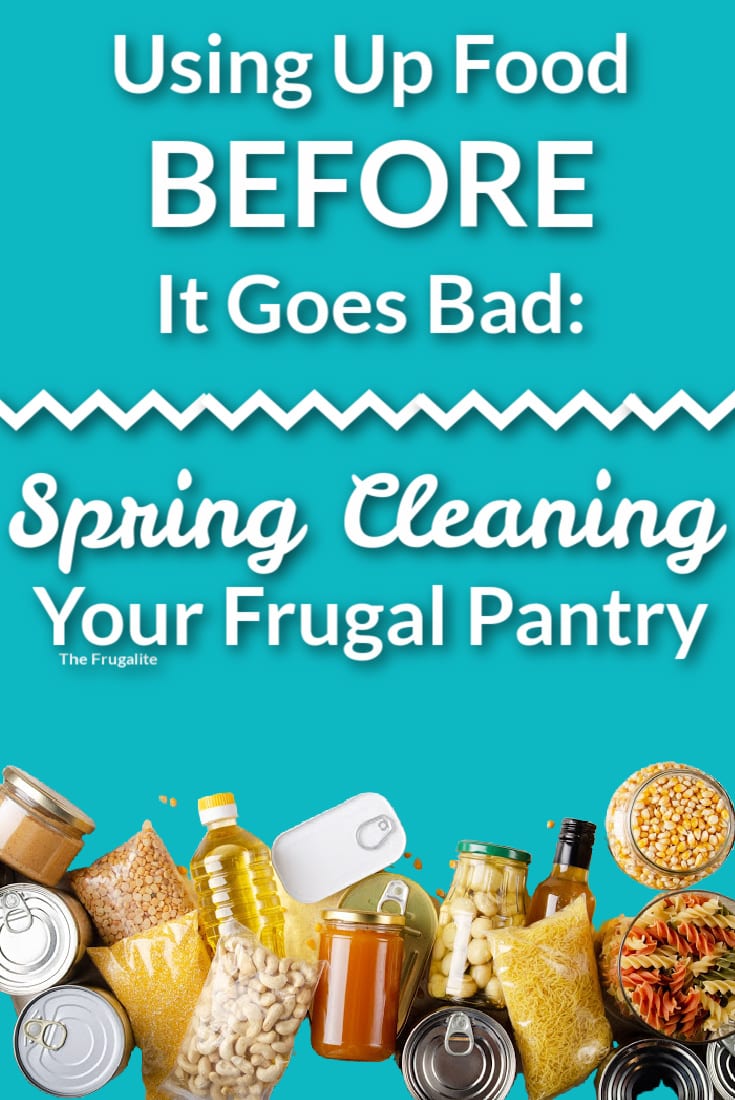

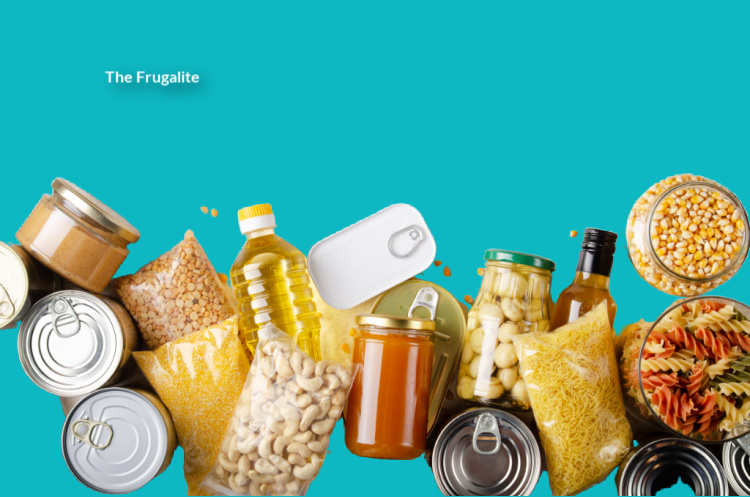

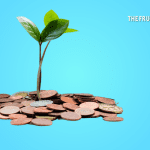
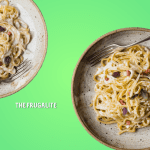
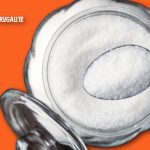

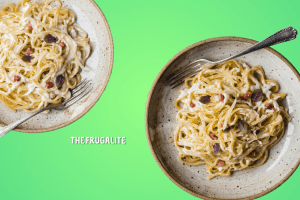
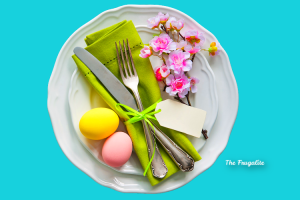


2 thoughts on “Using Up Food Before It Goes Bad: Spring Cleaning Your Frugal Pantry”
This is me at the moment, using it up before it’s too late as I absolutely hate food waste, it’s wasting money . Besides I am on a tight as budget to get my house foundations redone . Luckily for me the kiddos love my cooking.
Pumpkin is good in oatmeal plus adding fiber and vitamins. I suspect food waste is in the top 3 money wasters. Might even be #1 for some people. It really doesn’t take much time to see what one has then plan a meal around it. We’ve had meals that we’ll never have again as we’ll never have that combination of ingredients (or leftovers) again.